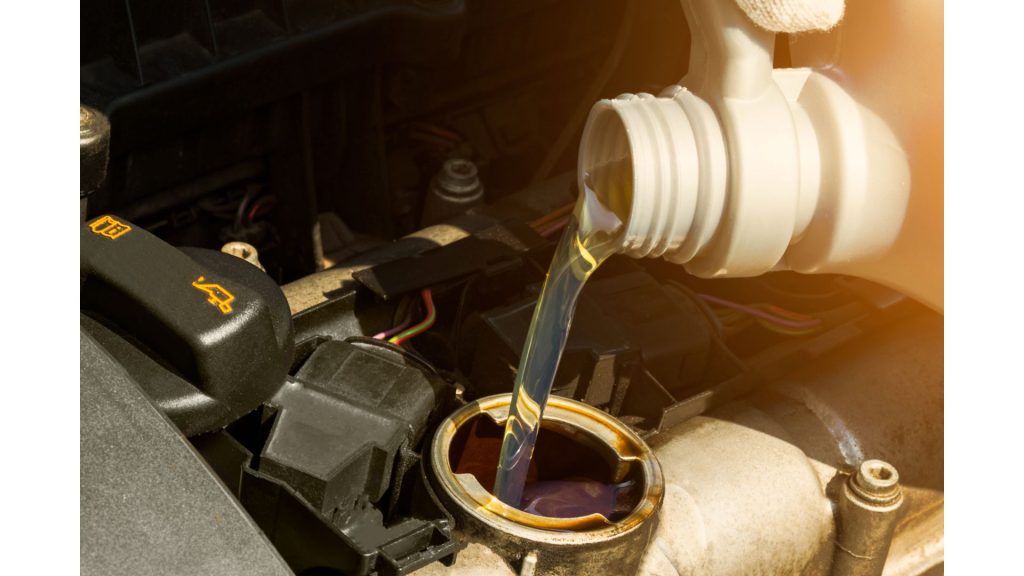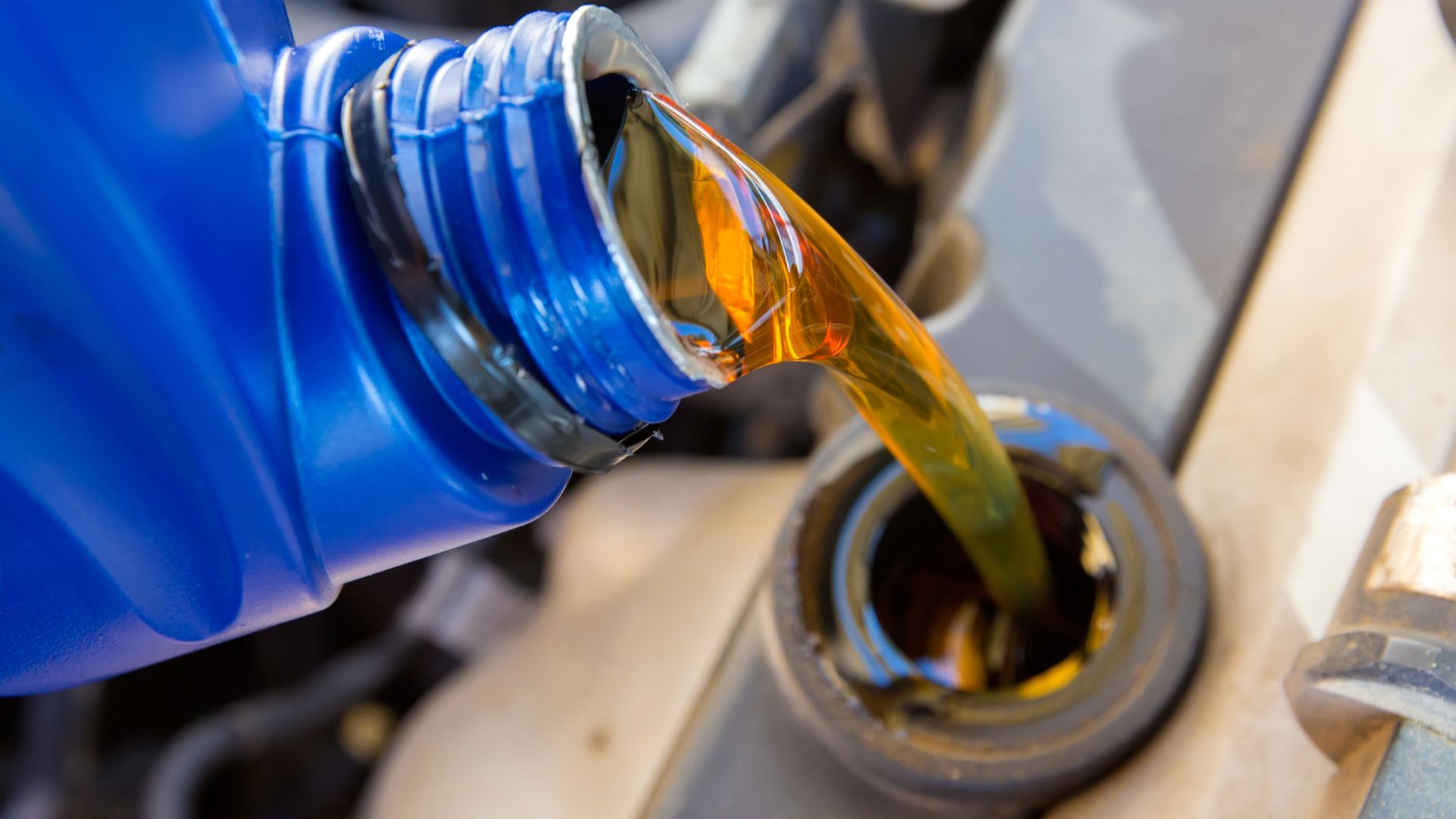It isn’t enough to add oil to your 2-stroke or 4-stroke engine. You need the correct oil.
What Happens When You Put 2-Stroke Oil In A 4-Stroke Engine?
- For the most part, 2-stroke oil is not a threat to 4-stroke engines. It won’t harm the engine, not directly.
- You won’t notice the 2-stroke oil if you only use it once. And even if it presents a challenge, a single oil change will solve the issue. 2-stroke oil becomes a problem when you continue using it because the oil is too thin to provide sufficient lubrication.
- 2-stroke oil generates more exhaust fumes.
- You may notice oil droplets on the ground, especially if the engine in question is older and worn out.
- 2-stroke oil in the fuel tank is not a problem. Although, it may ruin the spark plugs after a while.
This is what you should know about 4-stroke engines:
1). 4 Strokes
4-stroke engines are called so because they use four strokes to perform their task. A stroke is the equivalent of a piston’s upward or downward movement. The 4-stroke engine appears in most cars and motorbikes because of the reliability and sustainability it offers.
2). Operations
A 4-stroke engine works the same way as its 2-stroke counterpart. However, the piston moves up and down four times:
- The engine uses the downward stroke to pull air into the cylinder via the intake valve (Intake Stroke).
- The upward stroke compresses the air/fuel mixture (Compression Stroke).
- A spark ignites the air/fuel mixture, and the resulting explosion pushes the piston down (Power Stroke). This turns the crankshaft.
- The upward stroke forces the gases from the combustion process out of the exhaust valve.
Energy Education has an animated diagram that shows the various processes that occur as the piston moves up and down.
3). Efficiency
Only 20 percent of the fuel becomes mechanical energy. Of that 20 percent, the wheels use 15 percent. The rest is wasted. Engineers eliminate waste by improving the compression ratio.
4). Intake And Exhaust Valves
4-stroke engines have intake and exhaust valves. The air that reacts with the fuel enters the chamber via the intake valve. The gases produced by the combustion process emerge from the exhaust valve.
5). 4-Stroke Oil
- You don’t mix oil and fuel in a 4-stroke engine. According to Berryman Products, 4-stroke engines have a separate oil reservoir.
- 4-stroke engines use a process AMSOIL calls pressurized lubrication to distribute oil. This is where the oil pump applies a thin lubricant between the engine’s various moving parts.
- 4-stroke engines can also deploy oil via splash lubrication. This is where a rotating crankshaft (that was partially submerged in the oil sump) splashes the engine’s components with oil.
- A 4-stroke engine doesn’t burn oil. Instead, the oil flows from the crankcase and back, lubricating the engine’s components along the way.
- The right 4-stroke oil keeps the engine clean while also preventing wear and tear.
What About 4-Stroke Oil In A 2-Stroke Engine – What Happens?

- The spark plugs will suffer.
- You may cause blockages in the exhaust port.
- 4-stroke oil permanently damages the engine, forcing you to replace the cylinder and pistons.
- 2-stroke engines may survive lower grade 4-stroke oil because it doesn’t feature the many additives you find in modern 4-stroke oil.
Consider the following:
1). 2 Strokes
A 2-stroke engine is called so because it transitions through all four cycles (Intake, Compression, Combustion, Exhaust) in two strokes. The piston moves up and down once. Even though you get more power, 2-stroke engines typically appear in lawnmowers, mopeds, go-carts, and other smaller motors. You won’t see them in conventional vehicles.
2). Operations
If you know how a 4-stroke engine works, you will recognize the stages through which a 2-stroke engine transitions:
- The piston moves up, opening the intake port and allowing air to enter the crankcase. The air mixes with the fuel and oil as it transitions through the carburetor.
- The piston’s upward motion is not finished. The engine must compress the air/fuel mixture in the cylinder before the piston reaches the top dead center and the spark plug ignites the air/fuel mixture.
- The explosion from the air/fuel mixture will push the piston down.
- The pressurized oil/fuel mixture from the crankcase will enter the cylinder via the transfer port.
- The remaining gases will exist via the exhaust port.
Watch this video to know how 2 stroke engine works!
3). Efficiency
2-stroke engines are less efficient than 4-stroke engines. They wear out faster because they operate at a higher RPM. The engines are noisy and unfriendly to the environment. However, they are cheaper and lighter, which is why manufacturers use them in handheld tools like backpack blowers.
4). Ports
2-stroke engines do not feature intake and exhaust valves. For that reason, you do not expect to see a camshaft in the 2-stroke engine (The camshaft opens and closes the valves). The absence of a camshaft contributes to the engine’s lighter build. Instead of valves, you should look for ports in the cylinder wall.
5). 2-Stroke Oil
- 2-stroke engines use a mixture of fuel and oil.
- You mix oil and gasoline at a ratio of 16:1 – 100:1 (Fuel:Oil).
- Sometimes, the operator makes the oil and fuel mixture before applying it to the engine. In other cases, oil injection systems perform this task automatically.
- The Oil/Fuel mixture provides energy and lubrication.
- 2-stroke engines burn oil, which is why they are dangerous to the environment. The engines eject the remnants of this process into the air.
- Apply the paper test to a 2-stroke oil mixture before adding it to the engine. This involves placing a drop of the mixture on a piece of paper. You want an oil spot to remain on the paper because 2-stroke engines use a combination of gas and oil. If the paper dries completely, you only have gasoline. It hasn’t been mixed with oil, which is why it evaporated.
Difference Between 4-Stroke Engine and 2-Stroke Engine
1). 4-stroke engines transition through four stages, namely: intake, compression, power, and exhaust. The engine pulls fuel in, compresses it, ignites it, and then ejects the exhaust gases from the cylinder.
A 2-stroke engine has two primary stages. The engine introduces, compresses, and ignites an Air/Fuel mixture, generating an explosion that pushes the piston down.
2). The 4-stroke engine performs its task in two complete revolutions. The 2-stroke engine uses one complete revolution.
3). 2-stroke engines are lighter and more compact than their 4-stroke counterparts because they use one piston movement to perform multiple functions. The decision to use inlet and exhaust ports instead of a valve mechanism results in a simpler design.
4). 2-stroke engines guarantee significant mechanical efficiency (because the engine has less friction). But they use more fuel. 4-stroke engines are appealing because they use fuel once for every four strokes.
5). 2 Stroke engines are louder than 4-stroke engines because they generate more vibrations. Expect a high-pitched humming or buzzing.
6). 2-stroke engines are more toxic to the environment because they don’t burn as cleanly as 4-stroke engines. 2-stroke engines combine oil and fuel. 4-stroke engines don’t use mixed fuel.
7). You get higher torque at a lower RPM in 4-stroke engines. 2-stroke engines are the opposite. Expect more torque at a higher RPM.
8). 2-stroke engines wear out faster because they operate a higher RPM. Even though they are technically more powerful, 4-stroke engines are more durable.
9). The absence of a valve mechanism makes 2-stroke engines much easier to fix because of their simple design. On the other hand, 4-stroke engine repair and replacement costs are high.
10). You find 4-stroke engines everywhere, not just in cars and trucks but bikes, lawnmowers, and go-karts. 2-stroke engines are typically restricted to small applications.
Difference Between 4-Stroke Oil And 2-Stroke Oil
- 4-stroke fuel goes into a separate reservoir in the engine. The engine uses the oil for lubrication. It doesn’t burn the oil. You don’t have to mix the oil with anything. 2-stroke oil will also provide lubrication. However, you must combine it with fuel. The 2-stroke engine will burn off the oil
- They both have additives. For 2-stroke oil, those additives include fuel stabilizers, antioxidants, and detergents. But the concentration of additives in 4-stroke engines is much higher. They include anti-wear components and foam retardants.
- 4-stroke oil can damage a 2-stroke engine. However, 2-stroke oil is unlikely to harm a 4-stroke engine.
- You don’t have to change 2-stroke oil. The engine burns it away.
Related post:

